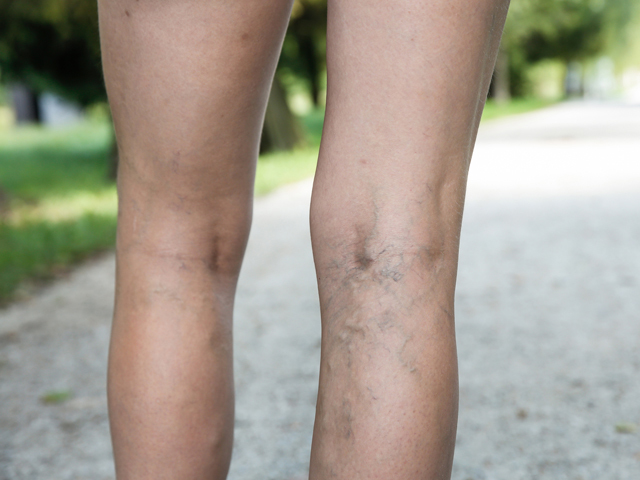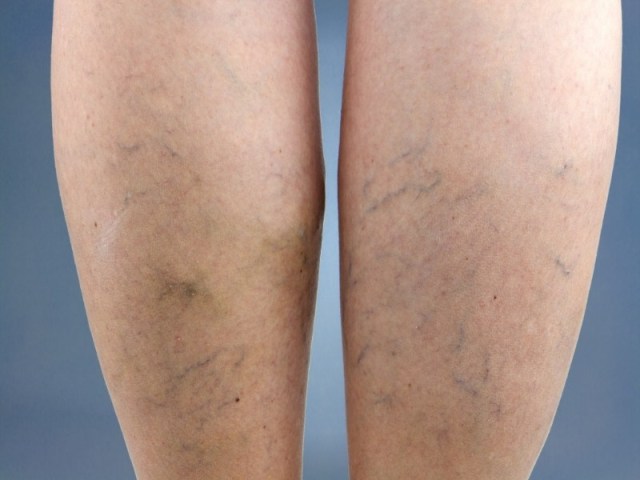Varicose Veins Discussion
October 25, 2019

Varicose capillaries are ropy, inflamed blood vessels that are close to the surface of the skin. Knotty blood vessels are the smaller, great blue capillaries that are under the skin. Spider capillaries are smaller sized, red or blue capillaries that remain in the skin layer.
What triggers varicose capillaries?
The normal function of leg blood vessels is to carry blood back to the heart. Throughout strolling activity, the calf muscular tissue acts as a pump, compressing the leg veins and also compeling blood back towards the heart.To prevent blood from going in the incorrect direction, blood vessels have one-way shutoffs that protect against blood from streaming backwards down the leg. If the valves are faulty (a problem called valvular inexperience), blood flows back right into surface blood vessels and down the leg.
This procedure is referred to as reflux. Reflux leads to blood vessels expanding as well as becoming varicose. As soon as veins come to be varicose, they lose their ability to snap back right into their proper form, and also come to be a lot more plastic as opposed to elastic.
Varicose blood vessels sadly can not heal themselves, as well as this condition is either stabilized with compression pipe, or managed with one of the capillary treatment strategies. The greater saphenous blood vessel is just one of one of the most frequently damaged capillaries that results in varicose blood vessels in the leg.

Who goes to risk for varicose blood vessels?
There are numerous danger elements for varicose blood vessels. These threats consist of a family history of varicose blood vessels, weight problems, maternity, hormone changes at menopause, job that needs extended standing or resting, and also previous vein illness such as phlebitis (inflammation of a superficial vein) or deep venous thrombosis (embolism in the deeper capillaries).
Ladies additionally often tend to suffer from varicose blood vessels greater than guys. In addition, varicose capillaries can appear after injury to the area.
What are the signs of varicose veins?
Varicose blood vessels might cause aching of the legs. The ankle joints, calf bone and feet may swell in the direction of day’s end, specifically in hot weather. Varicose capillaries can become sore and irritated, triggering redness of the skin around them. Skin changes from lengthy standing vein troubles consist of enlarging of the skin, a brown discoloration, red rashes, as well as skin infections. Check out more info on varikosette by clicking on this link.
Some clients with serious blood vessel problems can develop sores on the ankle joints, known as venous ulceration. These are commonly challenging to heal, as well as can be helped by treating the underlying blood vessel issue to avoid the reflux that led to the ulcer.
How can varicose veins be treated?
There are numerous ways to deal with varicose veins, depending on the signs and kinds of capillaries present:
1. Compression stockings: The traditional administration of varicose blood vessels is to put on compression hose pipe, workout, control your weight, and also elevate your legs over your waistline as high as feasible in order to drain pipes the capillary blood out of your legs. Compression tube will certainly aid the vein in pumping blood up the leg and also back to the heart. However, this strategy will certainly not make the varicose capillaries vanish. Nevertheless, the use of compression hose is really vital in not just stopping worsening of varicose veins, but likewise in stopping recurring issues after treatment.
2. Sclerotherapy: This strategy is used for the treatment of smaller varicose veins, in addition to reticular blood vessels and spider capillaries. A percentage of a medication (sclerosant) is infused directly right into the infected capillary. The drug irritates the internal cellular lining of the capillary and creates it to seal shut. The newer kinds of sclerosants are not unpleasant when injected utilizing a very little needle, as well as several sites of shot are generally required.
Furthermore, one normally needs anywhere from 2-6 therapies to obtain 70-80% clearance of the crawler blood vessels. The treatment is performed rapidly and easily without the need for anesthesia. Sometimes, we make use of ultrasound support for sclerotherapy. The number of treatments required will certainly differ with each person, relying on the degree of visible varicosities and crawler blood vessels. A variety of 2-6 therapies can be expected in order to achieve a 70-80% clearance of the crawler veins. We likewise utilize a Lyra 1064 nm YAG laser to deal with stubborn crawler capillaries.
Surgical Stripping: In the past, surgical removal or “removing” of the diseased blood vessel out of the leg was the best treatment we can provide patients with capillary issues. Blood vessel stripping is an old-fashioned procedure as well as needs to be very hardly ever used in the administration of varicose blood vessels with the newer methods that are presently available.




